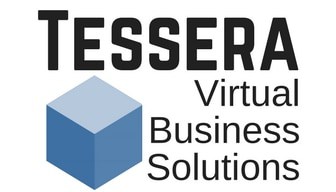Have you ever been met with a blank stare when you tell people what you do every day? When people ask me what I do, I respond with “I create and manage systems for online businesses.” Insert blank stare here.
I realized that many people do not understand the importance of systemizing a business. So I thought it would be beneficial to give a quick rundown of the systems every online business needs. These systems will help your business run smoothly and efficiently today and to be ready for growth tomorrow.
Answering Questions With Questions
First, some may question the need for spending the time to create systems when they have successfully launched a business with few systems to this point. To answer this question, we must ask a question. Do you expect your business to grow over time? If the answer is yes, then creating a systems plan is an absolute necessity.
Having systems in place allows you to not only work more efficiently in the here and now, but it allows you to move smoothly into scaled growth with fewer hiccups along the way. I have worked alongside teams that enjoyed rapid success and were ready to scale quickly. But their growth was slowed and their business was chaotic because they had no real systems in place to facilitate the growth.
So back to the systems every online business needs.
Cloud-Based File Management System
In the online business world, it is less important to have a physical file cabinet. But it is essential to have an online system to keep all your documents and files in one place for easy access. Even more important is a way to share those files with your team to collaborate digitally since there is a good chance you and your team do not all work in the same physical space.
Creating and maintaining systematic digital files will save more time than you realize. It will mean that you can put your hands on a document with ease. You can create templates for documents and emails that you use frequently. You can simply make digital copies to use over and over.
Sending documents is a breeze when you can simply create a pdf from your working doc and attach it to an email. Or better still, you can share documents with ease by simply sharing your working documents or files with different levels of access to those who need to read, comment, or edit those files and docs.
My absolute #1 recommendation for a cloud-based file management system for online businesses is G Suite. It has the full package of document types along with many other apps that will simplify your business life. You can learn more about what I love about G Suite here.
Customer Relationship Management System (CRM)
A CRM should be the hub of communication with your current and future customers. Many small businesses create their own CRM of sorts with a spreadsheet or a doc of some kind. But as your business grows, it will be important to keep up with your customer and sales pipeline with a tool designed to do just that.
Although some business types may have software specific to their industry for tracking leads and customer sales and communication, most businesses will use a more general CRM that can be customized to their needs. The list of inexpensive CRMs is long, but here are a couple of options to get started.
Hubspot is the most well-known free option, which gives you basic CRM functionality. It is a good place to start if you need something set up quickly and are on a budget.
As you grow and want more functionality, I would recommend Dubsado, which is not only a CRM, but also has features such as the ability to create branded proposals and contracts, a scheduling option, invoicing, automated workflows, etc.
Project/Task Management System
We all know that getting things done consistently over time requires some kind of list or system. But list-making and planning do not come naturally to some, including many visionaries who are successful in starting businesses.
Hence the need for a system to keep the business on track and headed toward its goals. A project and task management system will help you do just that. It will allow you to keep all projects and the tasks associated with those projects together in one place with related docs, links, communication, etc.
So when it comes time to work on that project, you can begin actually working toward completion instead of spending precious time gathering what is needed to begin working.
Did you know that workers spend 60% of their days on “work about work.” Work about work is simply “the activities that take time away from meaningful work, including communicating about work, searching for information, switching between apps, managing shifting priorities, and chasing the status of work.”
My top pick for a project management system is Asana. It is what I use in my business daily and what the majority of my clients use successfully each day. It is simple to learn. But it has the capability to help individuals and teams manage both large and small projects, as well as recurring tasks, with ease.
Process Management
Having written processes for your business is the most overlooked, but the most essential piece of systems strategy that can help or hinder business growth. When an online business is born, it may only employ one person. So that one person does everything that helps the business to survive. But, of course, that is not sustainable.
As soon as another team member joins in the venture, whether that is a virtual assistant or a salesperson or a partner of some kind, many of those processes are delegated. If the processes are not documented, the business runs the risk of inconsistent branding, inefficient time management, and simple misunderstandings that take time and energy to correct.
A system of written processes produces consistent outcomes. If you want to consistently produce what your client expects, a process plan should be in place.
There are many ways to create these “standard operating procedures”, but I suggest enlisting one person on your team to manage your Master Processes List. Because processes change over time, each process should be evaluated periodically to ensure consistency.
Once you have your ever-evolving master list, you will prioritize which process should be documented first, assign someone to create the written plan, then have your process manager create a system to organize the documents so that everyone has access to the digital file.
Why Do I Need These Systems Again?
Having a systems plan in place alleviates many problems that hinder the growth of a small, but scaling business. Many founders wait too long to create the systems needed, and it slows their growth and their ability to focus on the more essential pieces of creation, delivery, and building client relationships.
If something is not working for you or is frustrating you in your business, there’s a good chance that putting a system in place will allow you to shift from frustration to growth. Pick a current frustration and make a plan. Get in touch if we can help.
(Some links are affiliate links that allow me to provide free content for my audience.)


